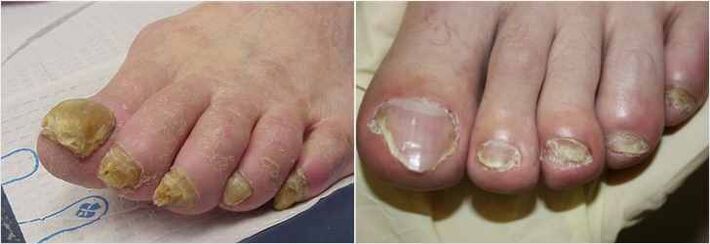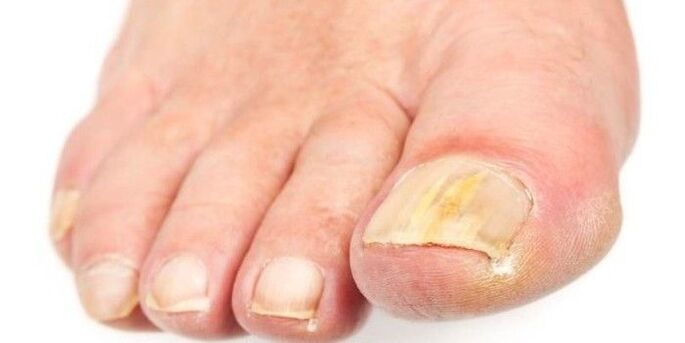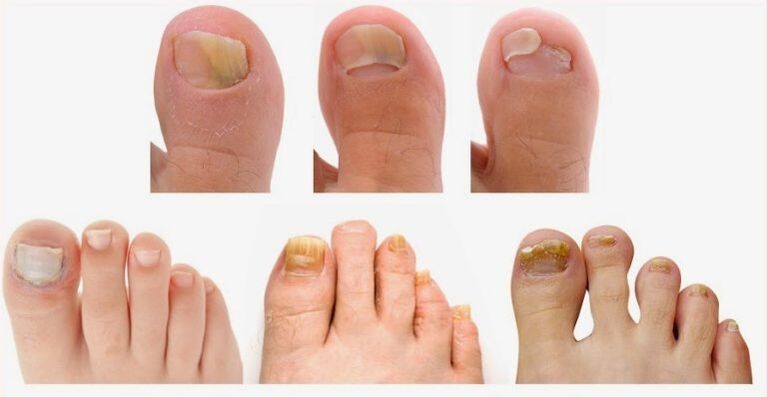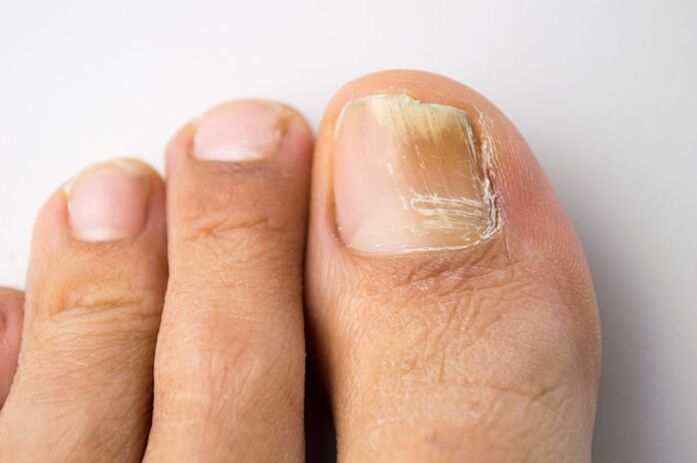Many leg changes in the legs can make people think they have a fungal nail infection from a medical point of view, known as onicomycosis. Fungal nail infection sometimes makes the condition contagious or is associated with lack of hygiene. In fact, up to 10% of all adults have fungal nail infections. This percentage increases to 20% of adults aged 60 and over. In fact, not -looking nails can be caused by various conditions, including but not limited, fungal infection. There are many other reasons why nails may seem different.

Nail fungus treatment
Onychomycosis is a fungal infection, usually caused by a special type of fungus, known as dermatophyte. Since most of these infections are relatively superficial, it seems that current procedures should work well. This is not so, because the nail is relatively impenetrable. Examples of states often confused with fungal nails include yellow (onicolisis), hematoma, green nails (caused by pseudomonas bacteria), bones (usually associated with psoriasis), nail infection (steamamonicia) and late injury.
What other conditions can be taken to fungal nails?
Here are some other conditions that can be instead of fungal nails:
Lines and Cumes: They are common and can be considered normal. They can get worse during pregnancy. A large groove in the center of the nail can be caused by injuries. Some people may notice these changes after chemotherapy.
Nails Senis: With age, nails become fragile and develop the ridges and the separation of nail layers at the end of the nail. To avoid this, it is necessary to use special solutions and baths.
White or yellowish nails may occur due to onicolisis. This means separating the plate from the base of the nail. The color that the form is the air under the nail. Treatment consists of cutting the plate briefly so as not to clean and polish. If you need to hide the color, you will need to wait two to three months. Constant Onklos can make nails susceptible to fungal infection. Red or black plaques due to bruise or blood under the nail, as a rule, occur by lesion. If there is a black spot under nail, which is not caused by injury, you should visit a dermatologist or orthopedist to ensure that this is not melanoma (the type of skin cancer associated with pigmented cells). Simple biopsy can exclude malignancy (cancer).
Green plaques can be caused by pseudomonas bacteria, which grow under the nail, which is partially separated from the base of the nails. This infection can cause an unpleasant nail odor. Treatment consists of cutting off your nails every four weeks, do not clean, polish if you need to hide the color and wait two to three months. It is also recommended to avoid immersion of plates in any water (and completely dry your legs after bathing. If the problem has not disappeared, there are prescriptions of medications for the treatment that the doctor prescribes. Nails affected by psoriasis may also be brown.
Edema and redness of the skin around the nail are called Paronychia. This is a skin infection at the bottom of the nail (cuticle). If the infection is acute (it has a fast start), it is usually caused by bacteria. He may react to hot baths, but it is better not to self -assert, but to consult a doctor immediately. Chronic Paronichia occurs when the cuticle is inflamed or annoyed over time. Sometimes fungi use damaged skin and infect it. Therapy begins with the fact that the skin remains dry and excreted from water. If the problem does not disappear, you should consult a doctor. Antibiotics are not often used, but may be needed with a severe infection.

Chronic nail injury can lead to nail damage, which can look a lot like fungal nails. Some injuries can cause constant changes that may imitate the appearance of fungal nails. The fungus microconidii trichophyton, which lives on the ground and can lead to fungal infections of skin, hair or nails.
What causes fungal infections and what are some risk factors?
In normal healthy people, fungal nail infections are often caused by a fungus, which fits wet areas. Community showers, such as the gym or pools, ordinary sources. The transition to nails that use inadequate tool cleansing (for example, clipper, fillets and baths), as well as life with family members with fungal diseases, are also risk factors. It has been proven that athletes are more susceptible to nail fungus.
This is supposed to be due to the fact that the densely tight and sweaty and sweaty boots associated with the repeated nail lesion in the legs. The presence of sports loads increases the likelihood of the fungus infecting nails in the legs. Repeated lesion also weakens the plate, which makes it more susceptible to fungal infection. This includes everything that worsens the immune system can make a person prone to fungus infection. This includes conditions such as AIDS, diabetes, cancer, psoriasis or adoption of any immunosuppressive, such as steroids.
Are the fungal nails contagious?
Although the fungus should be obtained somewhere, it is not very contagious. It is so common that finding more than one person in a family who has this is nothing more than an accidental coincidence. The fungus can be transmitted from person to person, but only with constant intimate contact.
What are symptoms of fungi and nail signs?
Although fungal nails are usually cosmetic problems, some patients suffer from pain and discomfort. These symptoms can be aggravated by shoes, inappropriate inadequate activity and finish. There are many types of mushrooms that can affect nails. However, the most common, however, is called Trichophyton Rubrum. This type of fungus tends to infect the skin (known as dermatophyte) and manifests itself in the following specific methods. It starts at the ends of the nails and raises the dish: it is called "distal onychomycosis". This is the most common type of fungal nail infection in adults and children (90% of cases).

It is more common on the toes, the thumb is usually the first to influence. Risk factors include elderly age, swimming, sports loads, psoriasis, diabetes, family members with depressed infection or immune system. It usually begins like a colorless area in the corner of the thumb and spreads slowly to the cuticle. It is often accompanied by onicolisis. The most common cause is T.
It starts at the base of the nail and raises a nail: it is called "proximal tendon onicomycosis". This is the least common type of fungal damage (about 3% of cases). It sounds like a distal type, but it starts with a cuticle (nail base) and spreads slowly to the tip of the nail. This type is almost always found in people with a damaged immune system. It is rarely possible to see fragments under the tip of the nail with this condition, unlike the long distal onychomycosis. The most common cause is T. rubrum mold and dermatophytes.
Yeast onychomycosis: This type is caused by yeast named Candida, not by the tricophoph fungus, appointed above. This is more common in nails and is a common cause of fungal nails. Patients may be associated with paronychia (cuticle infection). Candida can cause yellow, brown, white or thickened nails. Some people who have this infection also have fungi in the chronic mouth or Paronichia), which is also infected with pores. White surface onychomycosis: In this state of a nail, a doctor can clean the white powder material at the top of the nail plate. This condition is more common in tropical environments caused by a well -known fungus and a Trihofitii manager.
What tests are used by health experts to diagnose fungal nails?
It has been shown that only a physical examination is an unreliable method to diagnose fungal nails. There are many conditions that can make nails look damaged; Therefore, even doctors have a difficult time. In fact, studies have shown that only about 50% - 60% of abnormal appearance cases of nails were caused by a fungus. Therefore, laboratory tests are almost always indicated. Some insurance companies may even request a confirmation of a laboratory test for diagnostics to cover an antifungal medicine. A sample plate is obtained by cutting the nail or drilling a hole in it. This piece is sent to the laboratory where it can be painted, cultivated or tested using PCR (to identify the genetic material of organisms) to identify the presence of the fungus.
If the negative result of biopsy is accompanied by high clinical suspicion, for example, lame, bleached, thickened and loose plates, this requires a second test due to the prevalence of negative false results in these tests. Most drugs used to treat nail fungus have side effects, so you should familiarize yourself with the against -indications.

What do experts treat nail fungus?
There are several doctors who can provide nail fungus treatment. The assistant doctor, dermatologist or orthopedist can treat nail fungus. Any of these doctors can provide proper diagnosis and prescribe specific medications for a fungal infection. An orthopedic or dermatologist can shake the upper layer of the nail or even remove part of the nail.
What treatment of fungal nails is needed?
Creams and other relevant medicines are traditionally less effective against nail fungus than oral medicines. This is due to the fact that the nails are very complicated for the penetration of external applications. It is also difficult to join local treatment schemes. Often, these medications require daily applications during the period up to one year to see the results. One of the main advantages of local treatment is the minimum risk of serious side effects and the interaction with drugs compared to oral therapy.
Coral antifungal therapy operates in about 50-75% of cases, depending on the drug. This can take from nine to twelve months to ensure that it worked or not, because it is how long you need to build the nail. Even when the therapy works, the fungus can return in about 20 to 50% of cases. Currently, oral antifungal therapy is considered the best tool for the treatment of leg fungi due to higher healing rates and a shorter treatment duration compared to local therapy.
There are several innovative treatment methods that are still verified:
- Laser therapy or photodynamic therapy use the use of light active agents on a plate, followed by a bright light wavelength light on the nail.
- The use of electric current to assist the absorption of relevant antifungal medications in a nail: it is also called ionphoros.
- The use of a special nail polish that alters the nail microclimate to make it inhospitable for fungus growth: if it works, it can be a cheap way to treat this problem in the future.
One way to finally get rid of nail fungus is the operation. Surgical treatment of Onomicosis includes nail removal. However, this usually provides only temporary relief, and relapse is common if additional antifungal medications (oral or local) are not used at the same time. However, surgical removal can be justified if the played nail is associated with other factors such as injury or infection.
Is it possible to prevent the appearance of nail fungus on the legs?

Since the fungus really flourishes in hot humid areas (eg sweat legs), there are certain areas that should be avoided or used with caution. It is assumed that showers, changing rooms and swimming pools are sources of fungi, although there are no studies confirming this fact.
Nail nails and acrylic nails also make a plate less "respiratory" and make it more susceptible to fungal infection. Mushrooms are everywhere - in the air, dust and soil. Hygienic measures such as spraying socks and shoes are reasonable, and perhaps these measurements may even help a little. However, avoiding dense, not breathing boots or gender for sports facilities, it may well be the best prevention. Daily washing the legs and drying between fingers can help prevent nail fungus. Fungi are transferred to pets such as cats and dogs. However, they do not usually cause a disease.
How to determine nail fungus?
Fungal nail treatment can be difficult and can take up to 18 months. Reinfection and reinfection are common (40% to 70% reflection frequency). An attempt to remove or alter risk factors, if possible, is important to avoid re -infection. People who have medical diseases that predict fungal injuries can be even more cured from the fungus.
Tips for preventing nail fungus treatment
The fungus causes only 50% -60% of non -nail nails inflated. It is difficult to immediately observe the difference between the various reasons for bleached nails (even for doctors). Onychomycosis is usually not treated. The reasons why medical treatment is necessary mainly with skin or nail skin lesions.























